30 apr 2015

Israel returns vessels confiscated after straying from fishing zone, as Palestinian fishing union chief urges release of dozens more.
Fifteen fishing vessels belonging to Gaza Strip residents were returned on Wednesday from Israel to Gaza. The boats were seized by the IDF after their owners veered from the maritime area approved for fishing.
The decision was made by the Coordinator of Government Activity in the Territories in conjunction with the Gaza fishermen's association. The boats were returned by Israeli naval troops to the north Gaza Strip.
After Operation Protective Edge, the area approved for Gaza fishermen was returned to six nautical miles. Since the summer conflict, several incidents have occurred in which naval troops fired warning shots at fishermen who strayed from the approved zone or approached Israeli territory. The IDF said the decision was made following "a thorough examination of the matter by the IDF and as part of the steps taken to assist the residents of the Gaza Strip."
Military sources added that "in the maritime area adjacent to the Gaza Strip there is a zone that is approved for fishing.
"The security limitations are periodically examined and are determined by the necessity of IDF presence, while considering the level of damage to the civilian population.
"The IDF sees the fishing industry as very important, as it is one of the foremost industries in Gaza, and considers this in relation to the security threat."
Palestinian fishing union chief Nizar Ayyash told AFP the return of 15 boats was welcome but demanded that Israel hand back dozens more vessels still in its possession.
"It is true this is the first time Israel has returned fishing boats... but its forces fire at fishermen before they've even exceeded the imposed limit, especially off southern Gaza," he said.
"There are still 60 boats held by the Israeli navy, and we demand Israel return them," he added.
Last month, Israeli forces shot dead a fisherman and arrested two others, according to Gaza medics. An Israeli army spokeswoman said at the time four Palestinian boats had strayed out of their designated fishing zone, but did not comment on casualties.
Around 4,000 fishermen work in Gaza, more than half of whom live below the poverty line.
Fifteen fishing vessels belonging to Gaza Strip residents were returned on Wednesday from Israel to Gaza. The boats were seized by the IDF after their owners veered from the maritime area approved for fishing.
The decision was made by the Coordinator of Government Activity in the Territories in conjunction with the Gaza fishermen's association. The boats were returned by Israeli naval troops to the north Gaza Strip.
After Operation Protective Edge, the area approved for Gaza fishermen was returned to six nautical miles. Since the summer conflict, several incidents have occurred in which naval troops fired warning shots at fishermen who strayed from the approved zone or approached Israeli territory. The IDF said the decision was made following "a thorough examination of the matter by the IDF and as part of the steps taken to assist the residents of the Gaza Strip."
Military sources added that "in the maritime area adjacent to the Gaza Strip there is a zone that is approved for fishing.
"The security limitations are periodically examined and are determined by the necessity of IDF presence, while considering the level of damage to the civilian population.
"The IDF sees the fishing industry as very important, as it is one of the foremost industries in Gaza, and considers this in relation to the security threat."
Palestinian fishing union chief Nizar Ayyash told AFP the return of 15 boats was welcome but demanded that Israel hand back dozens more vessels still in its possession.
"It is true this is the first time Israel has returned fishing boats... but its forces fire at fishermen before they've even exceeded the imposed limit, especially off southern Gaza," he said.
"There are still 60 boats held by the Israeli navy, and we demand Israel return them," he added.
Last month, Israeli forces shot dead a fisherman and arrested two others, according to Gaza medics. An Israeli army spokeswoman said at the time four Palestinian boats had strayed out of their designated fishing zone, but did not comment on casualties.
Around 4,000 fishermen work in Gaza, more than half of whom live below the poverty line.
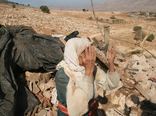
Dozens of soldiers invaded, Thursday, several areas of the West Bank’s Northern Plains, and ordered around 50 Bedouin families to leave their areas, as the army intends to conduct training. Previous repeated military drills led to burning around 4000 Dunams.
Head of the Wadi al-Maleh Village Council ‘Aref Daraghma said the soldiers decided to displace 27 families from al-Borj, al-Meeta and al-Maleh areas, 10 families in Khirbet Ebzeeq, and 10 families in Hamsa area.
Daraghma added that the army started many years ago, forcing dozens of Bedouins out of their lands and sheds for a few days each time, so that it can conduct military drills using live fire, including explosives.
He said that approximately 4000 Dunams of natural grazing lands have been burnt, as a result of repeated military drills in the area.
Head of the Wadi al-Maleh Village Council ‘Aref Daraghma said the soldiers decided to displace 27 families from al-Borj, al-Meeta and al-Maleh areas, 10 families in Khirbet Ebzeeq, and 10 families in Hamsa area.
Daraghma added that the army started many years ago, forcing dozens of Bedouins out of their lands and sheds for a few days each time, so that it can conduct military drills using live fire, including explosives.
He said that approximately 4000 Dunams of natural grazing lands have been burnt, as a result of repeated military drills in the area.
29 apr 2015
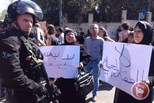
A protester holds a sign reading "No to collective punishment.
Israeli polices forces violently dispersed a Palestinian protest in the occupied East Jerusalem village of al-Tur on Wednesday, amid complaints that authorities' closure of the village's main road is a form of "collective punishment" against locals.
Sources told Ma'an that dozens of residents of the neighborhood on the Mount of Olives as well as foreign activists carried out a sit-in on al-Tur's main street to protest Israeli authorities' decision to shut down major thoroughfare Suleiman al-Farsi street with two concrete blocks.
The street was closed earlier this week when locals protested against the death of a 17-year-old boy from the area who was shot dead after a scuffle with a soldier at a nearby checkpoint.
Mufid Abu Ghannam, director of a local activist committee, told Ma'an that Israeli forces assaulted protesters on Wednesday and launched stun grenades at sit-in participants, injuring two people with shrapnel in their lower extremities. Israeli forces also reportedly detained two Palestinian protesters, Amjad al-Shami and Youssef Khuweis.Abu Ghannam said that even after protesters had dispersed, Israeli forces continued firing stun grenades at people in the area.
Israeli police spokesman Micky Rosenfeld confirmed the incident, saying that police used stun grenades against protesters after they blocked roads in what he called an "illegal demonstration" in which "stones were thrown at police officers who were at the scene."
Rosenfeld denied any injuries in the incident. The sit-in on the main street of al-Tur was held concurrently with rallies at five schools in the village, where students carried out sit-ins in school yards in protest against the closure of the village's entrance.
Suleiman al-Farsi Street is considered the main entrance to the village, and local activists told Ma'an that the closure of the road negatively affected the ability of 3,000 local residents to live normally. The closure also prevents ambulances and fire trucks from reaching the village.
The thoroughfare is also the main road leading to the Suleiman al-Farsi mosque, the village cemetery, and two elementary schools where some 1,200 students attend. The closure of the roads followed widespread protests against the killing of Muhammad Abu Ghannam on Saturday as he crossed the al-Zayyim checkpoint on foot resulted in widespread protests.
A soldier at the checkpoint reportedly insulted Abu Ghannam's sister, leading to a scuffle, while Israeli authorities have alleged the boy pulled a knife on the soldier.Israeli municipal authorities routinely close and block major roads leading into Palestinian neighborhoods of occupied East Jerusalem.
In addition to Al-Tur, another major road into the nearby town of al-Issawiya was also shut closed.Abu Ghannam was one of three Palestinians shot dead by Israeli forces in the last week.
Although Palestinians in occupied East Jerusalem live within territory Israel has unilaterally annexed, they lack citizenship rights and are instead classified only as "residents" whose permits can be revoked if they move away from the city for more than a few years. Jerusalem Palestinians face discrimination in all aspects of life including housing, employment, and services, and are unable to access services in the West Bank due to the construction of Israel's separation wall.
Tensions have been running high in East Jerusalem since last summer when Jewish extremists raided the area and kidnapped and murdered a 16-year-old Palestinian boy, Muhammad Abu Khdeir.Israeli forces have detained hundreds of Palestinians across East Jerusalem who have taken part in protests, especially against Israel's summer assault on Gaza, including 600 alone in the two months after Abu Khdeir's death.
Israeli polices forces violently dispersed a Palestinian protest in the occupied East Jerusalem village of al-Tur on Wednesday, amid complaints that authorities' closure of the village's main road is a form of "collective punishment" against locals.
Sources told Ma'an that dozens of residents of the neighborhood on the Mount of Olives as well as foreign activists carried out a sit-in on al-Tur's main street to protest Israeli authorities' decision to shut down major thoroughfare Suleiman al-Farsi street with two concrete blocks.
The street was closed earlier this week when locals protested against the death of a 17-year-old boy from the area who was shot dead after a scuffle with a soldier at a nearby checkpoint.
Mufid Abu Ghannam, director of a local activist committee, told Ma'an that Israeli forces assaulted protesters on Wednesday and launched stun grenades at sit-in participants, injuring two people with shrapnel in their lower extremities. Israeli forces also reportedly detained two Palestinian protesters, Amjad al-Shami and Youssef Khuweis.Abu Ghannam said that even after protesters had dispersed, Israeli forces continued firing stun grenades at people in the area.
Israeli police spokesman Micky Rosenfeld confirmed the incident, saying that police used stun grenades against protesters after they blocked roads in what he called an "illegal demonstration" in which "stones were thrown at police officers who were at the scene."
Rosenfeld denied any injuries in the incident. The sit-in on the main street of al-Tur was held concurrently with rallies at five schools in the village, where students carried out sit-ins in school yards in protest against the closure of the village's entrance.
Suleiman al-Farsi Street is considered the main entrance to the village, and local activists told Ma'an that the closure of the road negatively affected the ability of 3,000 local residents to live normally. The closure also prevents ambulances and fire trucks from reaching the village.
The thoroughfare is also the main road leading to the Suleiman al-Farsi mosque, the village cemetery, and two elementary schools where some 1,200 students attend. The closure of the roads followed widespread protests against the killing of Muhammad Abu Ghannam on Saturday as he crossed the al-Zayyim checkpoint on foot resulted in widespread protests.
A soldier at the checkpoint reportedly insulted Abu Ghannam's sister, leading to a scuffle, while Israeli authorities have alleged the boy pulled a knife on the soldier.Israeli municipal authorities routinely close and block major roads leading into Palestinian neighborhoods of occupied East Jerusalem.
In addition to Al-Tur, another major road into the nearby town of al-Issawiya was also shut closed.Abu Ghannam was one of three Palestinians shot dead by Israeli forces in the last week.
Although Palestinians in occupied East Jerusalem live within territory Israel has unilaterally annexed, they lack citizenship rights and are instead classified only as "residents" whose permits can be revoked if they move away from the city for more than a few years. Jerusalem Palestinians face discrimination in all aspects of life including housing, employment, and services, and are unable to access services in the West Bank due to the construction of Israel's separation wall.
Tensions have been running high in East Jerusalem since last summer when Jewish extremists raided the area and kidnapped and murdered a 16-year-old Palestinian boy, Muhammad Abu Khdeir.Israeli forces have detained hundreds of Palestinians across East Jerusalem who have taken part in protests, especially against Israel's summer assault on Gaza, including 600 alone in the two months after Abu Khdeir's death.
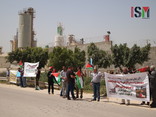
Around fifty Palestinians and international activists gathered today in Tulkarem, east of Nablus, to protest the presence of 11 Israeli chemical plants located in the city. The protest took place outside the Gishuri chemical plant on what is locally referred to as the “death road” due to the health problems caused by the Israeli plants.
The protesters were carrying signs demanding a clean environment and an end to the Israeli occupation, while Israeli soldiers deployed to guard the plant quickly responded with stun grenades and tear gas.
On one occasion Israeli soldiers fired tear gas canisters aimed directly at peaceful demonstrators and the press. As the protest continued, a 22-year old Palestinian man was shot by a rubber-coated steel bullet, hitting him in the abdomen. He was later taken to the local hospital and appeared to have suffered superficial damages only, although he was in great pain. The protest quickly subsided after this event.
Israels corporate occupation of Tulkarem
The protest against Israel’s chemical plants have been continuous since Gushiri Industries, a manufacturer of pesticides and fertilizers, first arrived in Tulkarem in the mid-1980s. The plant used to be located in the Israeli city of Netanya, only 12 kilometers away. However, a 1982 Israeli court order said the company was violating pollution regulations, making the company relocate to the West Bank’s Area C, which is under full Israeli control. The court order came after a complaint filed by Israeli citizens.
Since the arrival of Gushiri Industries, ten other chemical plants have located nearby, the last one in 2007. The location of these plants have caused many local farmers to lose most of their land and contributed to unemployment and poverty in the area. Hence, many local Palestinians have been forced to work at these chemical plants, as the Israeli corporations are taking advantage of the low labor costs and the non-applicability of Israeli labor laws in Area C.
Chronic diseases and land pollution
The most serious consequence of the presence of these chemical plants is the health effect on Palestinians. The air in Tulkarem has been found to contain alarmingly high rates of monoxide and toxic substances in studies by both the University of Birzeit and the Palestinian Ministry of Health. In an interview with the Middle East Monitor last year, Dr. Abed Darak of the Tulkarem Ministry of Health said the city has the highest cancer and leukemia rate in the West Bank, claiming that 20 per cent of all cases stems from the area – despite being home to only five per cent of the total West Bank population. A 2012 report from the Palestinian Ministry of Health found that 77 per cent of the cases of cancer in the city were directly linked to chemical substances from the factories.
A representative from the Palestine Technical University (PTU), which neighbors the Gushiri chemical plant to the south and the Apartheid Wall to the west, said today that the smell is “unbearable” after 3 pm, which explains why most residents of Tulkarem always keep their windows shut. Residents living near the factories have also developed health issues including asthma, reduced lung capacity, skin ailments and eye infections. This is especially true for elementary students.
Additionally, it has been estimated that approximately 300 dunams, i.e. 300,000 square meters, of agricultural land is contaminated by emissions from the factories.
A child’s cry: Stop poisoning Palestine’s schools
The global civic organization Avaaz is currently running a campaign named “A child’s cry: Stop poisioning Palestine’s schools” to help stopping the chemical plants in Tulkarem. By signing a petition on their website, you can help putting pressure on the EU, their biggest market, to apply their strict(er) environmental regulations and impose an import ban on these factories.
Related:
Haifa residents step up protest over carcinogenic industrial plants
Air pollution causes half of Haifa's child cancer cases
Haifa orders factories shut after report of cancerous pollution
The protesters were carrying signs demanding a clean environment and an end to the Israeli occupation, while Israeli soldiers deployed to guard the plant quickly responded with stun grenades and tear gas.
On one occasion Israeli soldiers fired tear gas canisters aimed directly at peaceful demonstrators and the press. As the protest continued, a 22-year old Palestinian man was shot by a rubber-coated steel bullet, hitting him in the abdomen. He was later taken to the local hospital and appeared to have suffered superficial damages only, although he was in great pain. The protest quickly subsided after this event.
Israels corporate occupation of Tulkarem
The protest against Israel’s chemical plants have been continuous since Gushiri Industries, a manufacturer of pesticides and fertilizers, first arrived in Tulkarem in the mid-1980s. The plant used to be located in the Israeli city of Netanya, only 12 kilometers away. However, a 1982 Israeli court order said the company was violating pollution regulations, making the company relocate to the West Bank’s Area C, which is under full Israeli control. The court order came after a complaint filed by Israeli citizens.
Since the arrival of Gushiri Industries, ten other chemical plants have located nearby, the last one in 2007. The location of these plants have caused many local farmers to lose most of their land and contributed to unemployment and poverty in the area. Hence, many local Palestinians have been forced to work at these chemical plants, as the Israeli corporations are taking advantage of the low labor costs and the non-applicability of Israeli labor laws in Area C.
Chronic diseases and land pollution
The most serious consequence of the presence of these chemical plants is the health effect on Palestinians. The air in Tulkarem has been found to contain alarmingly high rates of monoxide and toxic substances in studies by both the University of Birzeit and the Palestinian Ministry of Health. In an interview with the Middle East Monitor last year, Dr. Abed Darak of the Tulkarem Ministry of Health said the city has the highest cancer and leukemia rate in the West Bank, claiming that 20 per cent of all cases stems from the area – despite being home to only five per cent of the total West Bank population. A 2012 report from the Palestinian Ministry of Health found that 77 per cent of the cases of cancer in the city were directly linked to chemical substances from the factories.
A representative from the Palestine Technical University (PTU), which neighbors the Gushiri chemical plant to the south and the Apartheid Wall to the west, said today that the smell is “unbearable” after 3 pm, which explains why most residents of Tulkarem always keep their windows shut. Residents living near the factories have also developed health issues including asthma, reduced lung capacity, skin ailments and eye infections. This is especially true for elementary students.
Additionally, it has been estimated that approximately 300 dunams, i.e. 300,000 square meters, of agricultural land is contaminated by emissions from the factories.
A child’s cry: Stop poisoning Palestine’s schools
The global civic organization Avaaz is currently running a campaign named “A child’s cry: Stop poisioning Palestine’s schools” to help stopping the chemical plants in Tulkarem. By signing a petition on their website, you can help putting pressure on the EU, their biggest market, to apply their strict(er) environmental regulations and impose an import ban on these factories.
Related:
Haifa residents step up protest over carcinogenic industrial plants
Air pollution causes half of Haifa's child cancer cases
Haifa orders factories shut after report of cancerous pollution
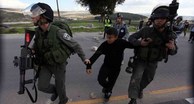
The Israeli occupation forces (IOF) at dawn Tuesday rounded up seven Palestinians from the West Bank and Occupied Jerusalem, including a 15-year-old minor.
Sources based in Occupied Jerusalem said the IOF troops rolled into al-Issawiya town and scoured a number of Palestinian homes shortly before they kidnapped the citizens Ali Mahmoud, Morad al-Shloudi, Mahmoud Abdul Rauf, and Mohamed Atiyeh.
Tension has been running high in the area after the IOF shot the Palestinian boy Ali Abu Ghannam dead on allegations of attempting to stab an Israeli officer at the Zaim checkpoint, in eastern Jerusalem.
The IOF campaign culminated in the abduction of the 15-year-old minor Maher Samer Sarhan shortly after he was heavily beaten by the Israeli soldiers.
“The soldiers hit me with their boots and batons as soon as I tried to inquire about the reason for the arrest, especially that no clashes or protests cropped up in the area,” the Wadi Helwa Information Center quoted Sarhan as reporting.
Meanwhile, the Israeli occupation army apprehended two allegedly wanted Palestinian citizens from the southern West Bank cities of Bethlehem and al-Khalil after having broken into and wreaked havoc on their family homes.
Sources based in Occupied Jerusalem said the IOF troops rolled into al-Issawiya town and scoured a number of Palestinian homes shortly before they kidnapped the citizens Ali Mahmoud, Morad al-Shloudi, Mahmoud Abdul Rauf, and Mohamed Atiyeh.
Tension has been running high in the area after the IOF shot the Palestinian boy Ali Abu Ghannam dead on allegations of attempting to stab an Israeli officer at the Zaim checkpoint, in eastern Jerusalem.
The IOF campaign culminated in the abduction of the 15-year-old minor Maher Samer Sarhan shortly after he was heavily beaten by the Israeli soldiers.
“The soldiers hit me with their boots and batons as soon as I tried to inquire about the reason for the arrest, especially that no clashes or protests cropped up in the area,” the Wadi Helwa Information Center quoted Sarhan as reporting.
Meanwhile, the Israeli occupation army apprehended two allegedly wanted Palestinian citizens from the southern West Bank cities of Bethlehem and al-Khalil after having broken into and wreaked havoc on their family homes.

Israeli soldiers kidnapped, on Wednesday at dawn, nine Palestinians in Hebron, three in Bethlehem, and one Nablus. Clashes took place in Nablus, and the soldiers conducted live fire training in different areas of Jenin.
Mohammad ‘Ayyad ‘Awad, spokesperson of the Popular Committee against the Wall and Settlements in Beit Ummar town, north of southern West Bank city of Hebron, said the soldiers invaded various neighborhoods in the town, stormed and violently searched scores of homes, and kidnapped nine Palestinians, including five former political prisoners.
‘Awad said the kidnapped former political prisoners have been identified as Nassim Taha Abu Mariyya, 17, Yousef Mohammad Kamel ‘Awad, 24, Nour Yousef ‘Awad, 23, Ayham Khalil Sabarna, 21, and Hassan Adam Khalil.
The soldiers also kidnapped Ma’an Ahmad Abu ‘Ayyash, 25, Yahia Mohammad Za’aqeeq, 18, Mohannad Abdul-Fattah ‘Arar, 16, and Mahdi Ziad Ekhmayyes, 19 years of age.
Several military vehicles also invaded the al-‘Azza refugee camp, north of Bethlehem, and kidnapped one Palestinian identified as Ahmad Fuad ‘Adwein, 24 years of age, after violently searching his home.
Furthermore, soldiers invaded Teqoua’ town, east of Bethlehem, broke into and searched several homes, causing excessive property damage, and kidnapped two Palestinians, identified as Aamer Salim Jibrin, 29, and ‘Odai Mahmoud Abu Mfarreh, 24 years of age.
In addition, soldiers invaded the al-Far’a refugee camp, northeast of the northern West Bank city of Nablus, also stormed into and searched several homes, and kidnapped a young man identified as Anas Mohammad ‘Abbas.
The invasion led to clashes between local youths and the soldiers; the youths hurled stones, empty bottles and Molotov cocktails on the invading army vehicles, while the soldiers fired rounds of live ammunition, and concussion grenades.
Several military vehicles also invaded the Dahiya area, east of Nablus, while military helicopters hovered overhead. Clashes took place in the Schools and az-Zaghloul streets, in Nablus, in addition to the Market Street in the Balata refugee camp.
The army also invaded Jaba’ town, south of the northern West Bank city of Jenin, and searched the home of political prisoner, Mohammad ‘Asad Ghannam, before interrogating his family.
It is worth mentioning that dozens of soldiers conducted training using live fire, helicopters and paratroopers, in the al-Jabreyyat neighborhood in Jenin city, and the nearby villages of Msalya and Qabatia, in addition to an area near a military base, behind the Annexation Wall.
The military base was built on Palestinian lands belonging to residents of Barta’a ash-Sharqiyya village.
Mohammad ‘Ayyad ‘Awad, spokesperson of the Popular Committee against the Wall and Settlements in Beit Ummar town, north of southern West Bank city of Hebron, said the soldiers invaded various neighborhoods in the town, stormed and violently searched scores of homes, and kidnapped nine Palestinians, including five former political prisoners.
‘Awad said the kidnapped former political prisoners have been identified as Nassim Taha Abu Mariyya, 17, Yousef Mohammad Kamel ‘Awad, 24, Nour Yousef ‘Awad, 23, Ayham Khalil Sabarna, 21, and Hassan Adam Khalil.
The soldiers also kidnapped Ma’an Ahmad Abu ‘Ayyash, 25, Yahia Mohammad Za’aqeeq, 18, Mohannad Abdul-Fattah ‘Arar, 16, and Mahdi Ziad Ekhmayyes, 19 years of age.
Several military vehicles also invaded the al-‘Azza refugee camp, north of Bethlehem, and kidnapped one Palestinian identified as Ahmad Fuad ‘Adwein, 24 years of age, after violently searching his home.
Furthermore, soldiers invaded Teqoua’ town, east of Bethlehem, broke into and searched several homes, causing excessive property damage, and kidnapped two Palestinians, identified as Aamer Salim Jibrin, 29, and ‘Odai Mahmoud Abu Mfarreh, 24 years of age.
In addition, soldiers invaded the al-Far’a refugee camp, northeast of the northern West Bank city of Nablus, also stormed into and searched several homes, and kidnapped a young man identified as Anas Mohammad ‘Abbas.
The invasion led to clashes between local youths and the soldiers; the youths hurled stones, empty bottles and Molotov cocktails on the invading army vehicles, while the soldiers fired rounds of live ammunition, and concussion grenades.
Several military vehicles also invaded the Dahiya area, east of Nablus, while military helicopters hovered overhead. Clashes took place in the Schools and az-Zaghloul streets, in Nablus, in addition to the Market Street in the Balata refugee camp.
The army also invaded Jaba’ town, south of the northern West Bank city of Jenin, and searched the home of political prisoner, Mohammad ‘Asad Ghannam, before interrogating his family.
It is worth mentioning that dozens of soldiers conducted training using live fire, helicopters and paratroopers, in the al-Jabreyyat neighborhood in Jenin city, and the nearby villages of Msalya and Qabatia, in addition to an area near a military base, behind the Annexation Wall.
The military base was built on Palestinian lands belonging to residents of Barta’a ash-Sharqiyya village.
28 apr 2015
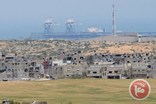
A 14-year-old Palestinian is in critical condition and has been transferred to Ramallah for treatment after he was hit by a stray Israeli bullet on Friday at his home in the central Gaza Strip, his family said Tuesday.
The family of Fadi Abu Mandil, 14, said that the teen will undergo surgery in his spine as he is currently unable to walk.
His uncle told Ma'an that the child was hit with a stray Israeli bullet while studying at his home when Israeli forces opened fire on Palestinian farmers.
On Friday medical sources said that the 14-year-old from al-Mughazi refugee camp had been transferred to Shuhada al-Aqsa Hospital in Deir al-Balah city.
Israeli forces were again firing on Gazan farmers on Tuesday, damaging property and forcing farmers to flee their land, and on Sunday, they shot and injureda 37-year-old man.
Israeli forces have repeatedly opened fire on Gazans since the ceasefire agreement signed Aug. 26, 2014 that ended a devastating 50-day war between Israel and Hamas.
In March alone, there were a total of 38 incidents of shootings, incursions into the coastal enclave, and arrests, according to the Palestinian Center for Human Rights.That was up from 26 incidents through February, and left seven Palestinians injured and one dead.
The attacks come despite Israeli promises at the end of the ceasefire to ease restrictions on Palestinian access to both the sea and the border region near the "security buffer zone."
The family of Fadi Abu Mandil, 14, said that the teen will undergo surgery in his spine as he is currently unable to walk.
His uncle told Ma'an that the child was hit with a stray Israeli bullet while studying at his home when Israeli forces opened fire on Palestinian farmers.
On Friday medical sources said that the 14-year-old from al-Mughazi refugee camp had been transferred to Shuhada al-Aqsa Hospital in Deir al-Balah city.
Israeli forces were again firing on Gazan farmers on Tuesday, damaging property and forcing farmers to flee their land, and on Sunday, they shot and injureda 37-year-old man.
Israeli forces have repeatedly opened fire on Gazans since the ceasefire agreement signed Aug. 26, 2014 that ended a devastating 50-day war between Israel and Hamas.
In March alone, there were a total of 38 incidents of shootings, incursions into the coastal enclave, and arrests, according to the Palestinian Center for Human Rights.That was up from 26 incidents through February, and left seven Palestinians injured and one dead.
The attacks come despite Israeli promises at the end of the ceasefire to ease restrictions on Palestinian access to both the sea and the border region near the "security buffer zone."

As part of daily violations against the Palestinian people in the besieged and improvised Gaza Strip, Israeli navy ships opened fire on a number of fishing boats in the Sudaniyya Sea area, northwest of Gaza City.
The WAFA News Agency has reported that the soldiers fired dozens of rounds of live ammunition on the fishing boats, less than four nautical miles away from the Gaza shore.
At least one boat was damaged, while the fishers had to jump into the water to avoid the Israeli navy fire.
Earlier on Tuesday, Israeli soldiers opened fire on Palestinian agricultural lands, and homes, east of Khan Younis, in the southern part of the Gaza Strip; no injuries were reported.
The WAFA News Agency has reported that the soldiers fired dozens of rounds of live ammunition on the fishing boats, less than four nautical miles away from the Gaza shore.
At least one boat was damaged, while the fishers had to jump into the water to avoid the Israeli navy fire.
Earlier on Tuesday, Israeli soldiers opened fire on Palestinian agricultural lands, and homes, east of Khan Younis, in the southern part of the Gaza Strip; no injuries were reported.

The Israeli Occupation Forces stormed at dawn Tuesday Nablus and Balata refugee camp to the east of the city.
A number of military vehicles broke into the city and deployed in different neighborhoods and streets which led to the outbreak of violent clashes.
Teargas grenades and sound bombs were heavily fired during the clashes, while local youths, in response, stoned the storming forces.
The Israeli forces also broke into Balata refugee camp, while no arrests were carried out.
A tight security cordon was earlier imposed around the city of Nablus, while a curfew was declared in Hawara town after a settler was injured when his car was hit with a Molotov cocktail.
Meanwhile, a fire sparked by an Israeli military drill swept across thousands of dunums of Palestinian farmland in the northern Jordan valley in Tubas on Monday.
Thousands of dunums of farmland in the Humsa area of eastern Tubas district were affected by the fire after Israeli forces opened fire during a military exercise.
Civil defense crews arrived from Qalqiliya and Nablus to fight the fire but were prevented from reaching the area as Israel had declared it a closed military zone.
Fire from Jordan Valley Military Drill Burns Thousands of Dunams
A fire sparked by an Israeli military drill swept across thousands of dunams of Palestinian farmland in the northern Jordan valley, Monday, the Palestinian civil defense said.
Some 3,000 to 4,000 dunams of farmland in the Humsa area of eastern Tubas district were affected by the fire after Israeli forces opened fire during a military exercise, according to Ma'an News Agency.
The district of Tubas is one of the occupied West Bank's most important agricultural centers, and the civil defense said that the land had been planted with wheat and barley.
Tubas Governor Rabih al-Khandaqji condemned Israeli "violations" in the area, deliberately aimed at "displacing people from their lands and deliberately inflicting grave losses to their resources".
Civil defense crews arrived from Qalqiliya and Nablus to fight the fire, but were prevented from reaching the area, as Israel has declared it a closed military zone.
The majority of the Jordan Valley is under full Israeli military control, despite being within the Palestinian West Bank.
According to the Applied Research Institute of Jerusalem, more than 15,000 dunams of land in the Tubas district have been confiscated by Israel for military bases with a further 8,000 dunams seized for illegal Israeli settlements.
A number of military vehicles broke into the city and deployed in different neighborhoods and streets which led to the outbreak of violent clashes.
Teargas grenades and sound bombs were heavily fired during the clashes, while local youths, in response, stoned the storming forces.
The Israeli forces also broke into Balata refugee camp, while no arrests were carried out.
A tight security cordon was earlier imposed around the city of Nablus, while a curfew was declared in Hawara town after a settler was injured when his car was hit with a Molotov cocktail.
Meanwhile, a fire sparked by an Israeli military drill swept across thousands of dunums of Palestinian farmland in the northern Jordan valley in Tubas on Monday.
Thousands of dunums of farmland in the Humsa area of eastern Tubas district were affected by the fire after Israeli forces opened fire during a military exercise.
Civil defense crews arrived from Qalqiliya and Nablus to fight the fire but were prevented from reaching the area as Israel had declared it a closed military zone.
Fire from Jordan Valley Military Drill Burns Thousands of Dunams
A fire sparked by an Israeli military drill swept across thousands of dunams of Palestinian farmland in the northern Jordan valley, Monday, the Palestinian civil defense said.
Some 3,000 to 4,000 dunams of farmland in the Humsa area of eastern Tubas district were affected by the fire after Israeli forces opened fire during a military exercise, according to Ma'an News Agency.
The district of Tubas is one of the occupied West Bank's most important agricultural centers, and the civil defense said that the land had been planted with wheat and barley.
Tubas Governor Rabih al-Khandaqji condemned Israeli "violations" in the area, deliberately aimed at "displacing people from their lands and deliberately inflicting grave losses to their resources".
Civil defense crews arrived from Qalqiliya and Nablus to fight the fire, but were prevented from reaching the area, as Israel has declared it a closed military zone.
The majority of the Jordan Valley is under full Israeli military control, despite being within the Palestinian West Bank.
According to the Applied Research Institute of Jerusalem, more than 15,000 dunams of land in the Tubas district have been confiscated by Israel for military bases with a further 8,000 dunams seized for illegal Israeli settlements.
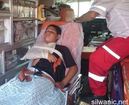
Archive Photo
Palestinian medical sources have reported that a child was moderately injured, in Yatta town, south of the southern West Bank city of Hebron, after being hit by an Israeli settler’s car.
The sources said the Shehda Mahmoud al-‘Amour, five years of age, was struck in Khallet al-Mayya area, in Yatta town, south of Hebron.
The Israeli settler tried to drive away after wounding the child, but local residents managed to stop him, before the army arrived at the scene.
Red Crescent medics provided the wounded child with the urgently needed treatment, before he was moved to an Israeli hospital for further treatment.
There have been hundreds of "hit and run" incidents that largely went uninvestigated by the Israeli authorities, in different parts of the occupied West Bank, even though many of those incidents led to fatalities.
One of those incidents is the case of Enas Dar Khalil, five years of age, who was killed in 2014, and the settler who killed her fled the scene.
Related:
Palestinian Injured After Being Rammed By An Israeli Car In Hebron
Israeli Settler Runs Over Palestinian Child in Tulkarem
Child Seriously Injured After Being Struck By Settler’s Car In Hebron
Israeli Settler Runs Over Hebron Child With Car
Child Injured After Being Rammed By Settler’s Car Near Hebron
Bethlehem Area: 3 Palestinian Youth Kidnapped, Settler Runs Over Teen
Palestinian Child Dies of Wounds Inflicted by Settler Car
Another Palestinian Hit by Israeli Settler Car
Yet Another Settler Hit and Run on Hebron Child
Palestinian medical sources have reported that a child was moderately injured, in Yatta town, south of the southern West Bank city of Hebron, after being hit by an Israeli settler’s car.
The sources said the Shehda Mahmoud al-‘Amour, five years of age, was struck in Khallet al-Mayya area, in Yatta town, south of Hebron.
The Israeli settler tried to drive away after wounding the child, but local residents managed to stop him, before the army arrived at the scene.
Red Crescent medics provided the wounded child with the urgently needed treatment, before he was moved to an Israeli hospital for further treatment.
There have been hundreds of "hit and run" incidents that largely went uninvestigated by the Israeli authorities, in different parts of the occupied West Bank, even though many of those incidents led to fatalities.
One of those incidents is the case of Enas Dar Khalil, five years of age, who was killed in 2014, and the settler who killed her fled the scene.
Related:
Palestinian Injured After Being Rammed By An Israeli Car In Hebron
Israeli Settler Runs Over Palestinian Child in Tulkarem
Child Seriously Injured After Being Struck By Settler’s Car In Hebron
Israeli Settler Runs Over Hebron Child With Car
Child Injured After Being Rammed By Settler’s Car Near Hebron
Bethlehem Area: 3 Palestinian Youth Kidnapped, Settler Runs Over Teen
Palestinian Child Dies of Wounds Inflicted by Settler Car
Another Palestinian Hit by Israeli Settler Car
Yet Another Settler Hit and Run on Hebron Child
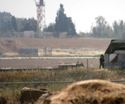
Israeli soldiers, stationed on military towers across the border fence, opened fire into Palestinian agricultural lands, and several homes, east of Khan Younis, in the southern part of the Gaza Strip.
The Palestinian News & Info Agency (WAFA) said the soldiers fired dozens of rounds of live ammunition on homes and agricultural lands, east of Khuza’a town, east of Khan Younis, causing property damage.
The farmers had to leave their lands fearing additional Israeli military escalation.
WAFA said Israeli planes also sprayed chemicals on Palestinian agricultural lands, close to the border fence, to render them useless in an attempt to keep the Palestinians out of their lands, adjacent to the border fence.
The Israeli army conducts daily assaults and violations targeting the Palestinians and their lands, in border areas in the coastal region, in addition to frequent attacks on Palestinian fishers and their boats in Gaza territorial waters.
The Palestinian News & Info Agency (WAFA) said the soldiers fired dozens of rounds of live ammunition on homes and agricultural lands, east of Khuza’a town, east of Khan Younis, causing property damage.
The farmers had to leave their lands fearing additional Israeli military escalation.
WAFA said Israeli planes also sprayed chemicals on Palestinian agricultural lands, close to the border fence, to render them useless in an attempt to keep the Palestinians out of their lands, adjacent to the border fence.
The Israeli army conducts daily assaults and violations targeting the Palestinians and their lands, in border areas in the coastal region, in addition to frequent attacks on Palestinian fishers and their boats in Gaza territorial waters.
